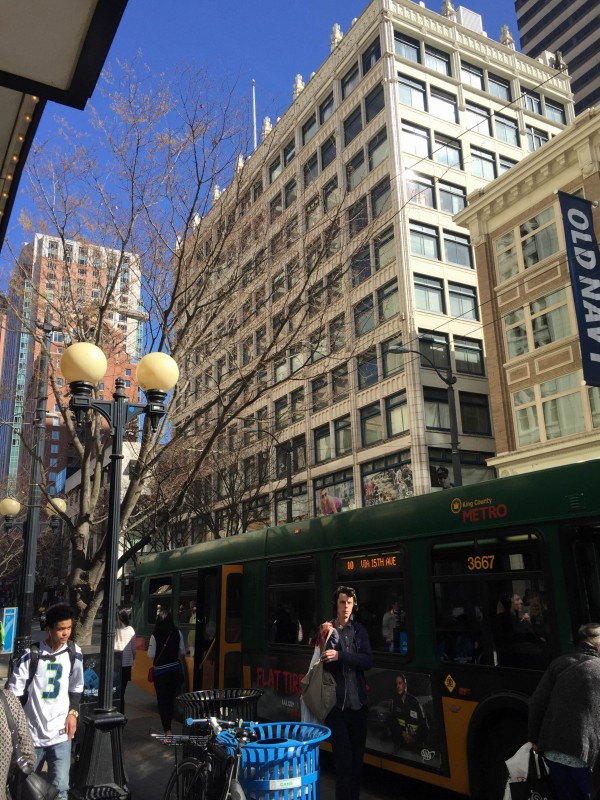
Back in December, the Seattle Hearing Examiner issued a decision that threw out a City land use code interpretation that allowed reductions to minimum parking requirements. The City’s interpretation centered on projects in multifamily and commercial zones and within one-quarter mile of frequent transit service. When located within these areas, a project could be exempt from or reduce the number of required parking spaces onsite based upon averaged headways for frequent transit service. The Hearing Examiner, however, took issue with that specific interpretation and ordered the Department of Planning and Development (DPD) to withdraw it.
This put a number of projects in doubt because without relief from the Hearing Examiner’s strict code interpretation. Some projects in the city may no longer be economically viable or could see their end product costs rise drastically. Onsite parking costs about $30,000-$60,000 per stall (depending upon site conditions and whether parking is located above-ground or below-ground) and is ultimately added to housing and commercial construction costs. In a time when Seattle housing costs are rising quickly and elected officials are focused on ways to reduce or manage housing costs, not requiring expensive onsite parking is one way to provide more affordable housing.
The definition of “frequent transit service” is key here. Seattle Municipal Code (SMC) 23.84A.038 “T” defines frequent transit service as “transit service headways in at least one direction of 15 minutes or less for at least 12 hours per day, 6 days per week, and transit service headways of 30 minutes or less for at least 18 hours every day.” The Seattle Department of Planning and Development (DPD) issued Director’s Rule (DR) 11-2012 in September 2012 to further clarify “frequent transit service” for the purposes of determining whether projects in multifamily and commercial zones qualify for the reduced parking requirement.
DR 11-2012 provided two methods for developers to determine whether a project qualifies for reduced on-site parking requirements:
- Using DPD’s dynamic mapping service (GIS) to identify lots that are within one-quarter mile of frequent transit service. Development sites within shaded areas on the maps were presumed to be within walking distance of frequent transit service.
- The prospective applicant could perform an analysis of transit frequency in a DPD-provided worksheet format and submit the findings with the permit application. Instructions for this worksheet specified:
“Frequent transit service means transit service headways in at least one direction of 15 minutes or less for at least 12 hours per day, 6 days per week, and 30 minutes or less for at least 18 hours every day:
- Four or more pick-ups per hour (15 minute headway) on average over 12 hours per day, 6 days per week; and
- Two or more pick-ups per hour (30 minute headway) on average for 18 hours every day.” [Emphasis added]
The Seattle City Council, understanding that reliable transit service allows residents to live without personal vehicles, enacted rules exempting or reducing minimum parking requirements when certain land use and transit frequency criteria are met.
SMC 23.54.020.F.2.a in particular provides that: “In multifamily and commercial zones, the minimum parking requirement for all uses is reduced by 50 percent if the use is located within 1,320 feet of a street with frequent transit service. The distance will be the walking distance measured from the nearest transit stop to the lot line of the lot containing the use.” In short, if a project is within a quarter mile of frequent transit, then it need only have half of the on-site parking that would otherwise be required.
In the decision to the Appeal of Neighbors Encouraging Reasonable Development (Hearing Examiner File: MUP-14-006 (DR, W); S-14-001), the Hearing Examiner held that “had the Council intended that headways be averaged, it could have inserted the word ‘average’ in two places within the definition to indicate that intent. It did not do so, and neither the Director nor the Examiner has the authority via statutory construction to add the word “average” to the term ‘headway’ in the definition of frequent transit service. Doing so would change the clearly stated meaning and the impact of the definition. This can be accomplished only through legislation.”
In response to the Hearing Examiner’s decision, DPD recently released proposed Director’s Rule 6-2015. The key differences between DR 11-2012 and Proposed DR 6-2015 are:
- DR 6-2015 does not provide for a DPD-maintained GIS map of property that is presumed to be within walking distance of frequent transit service; and
- Computation of headways is not permitted to be averaged.
The impacts of the Hearing Examiner’s decision and of DPD proposed update rule are this:
- A number of multifamily housing units that were already in the permitting process with and that had relied on DR 11-2012 were found to not qualify for the reduced parking requirements under the new rules. Some of these projects will not be built.
- Project applicants can no longer rely on a map to determine whether a project qualifies for reduced parking requirements and must undertake an analysis which adds costs to the project.
- Projects that are served by frequent, reliable transit with headways of 16 or 17 minutes during certain time periods and much shorter headways during other time periods would not qualify.
Ultimately, the best way to fix the uncertainty created by the decision is legislative action by the City Council. A solution to this would be for the Seattle City Council to make the change referred to by the Hearing Examiner and to allow averaging to be used by DPD. Another possible solution would be for DPD to generate a map approved by Council indicating property that is eligible for reduced parking requirements.

Renee Staton
Renee is a community organizer who lives in the Pinehurst neighborhood. She has been engaged on land use, transportation, neighborhood planning, housing affordability, and parks issues both at a neighborhood and at a citywide level. Renee believes in inclusive outreach and she holds an urbanist perspective in her organizing.

